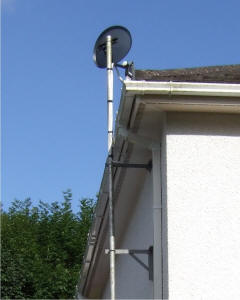 |
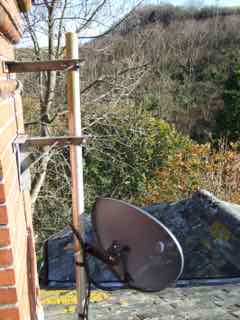 |
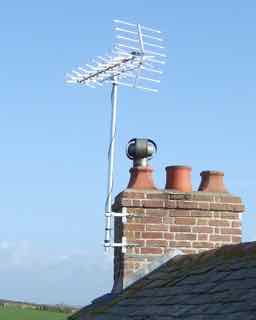 |
Sited like this to obtain reliable
signals.
Trees blocked signals everywhere else.
The mast and cabling have been left long,
to allow for any future tree
growth.
This one dish feeds 4 Sky HD boxes. |
A dish installation in Boscastle.
Invisible from the road.
Fitted low down, out of the wind. |
A high gain aerial in an exposed
coastal
location near Padstow. The signals here
are low, and salt laden winds will quickly
rust any untreated steel in the installation. |
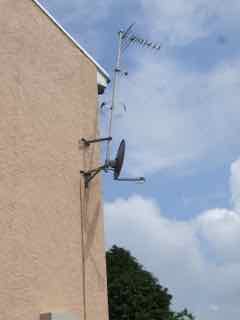 |
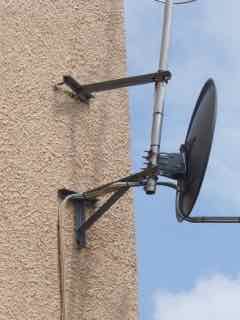 |
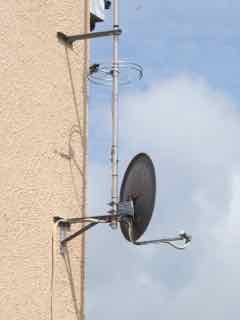 |
| An NCDC, IRS
array at Mount Camel, Camelford after a storm. The masonry bolts first
fitted were undersized, and the brackets too close together. This
typical array, with its amplifiers and multi-switches supplies twelve
flats. |
A closeup of the problem.
Too much leverage in high winds
have pulled the undersized bolts
out of their fixings. |
All fixed.
The top bracket has been re-positioned
higher up the wall, with new, larger bolts.
Dish alignment checked and optimised. |
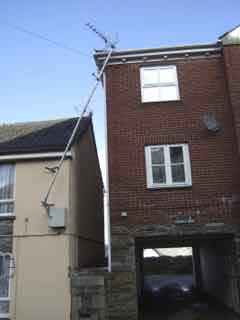 |
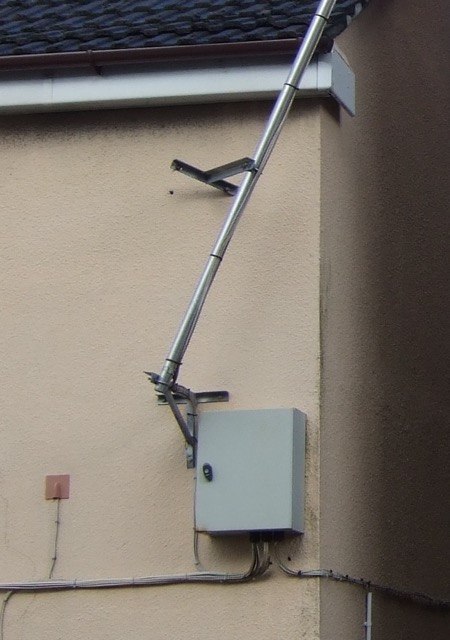 |
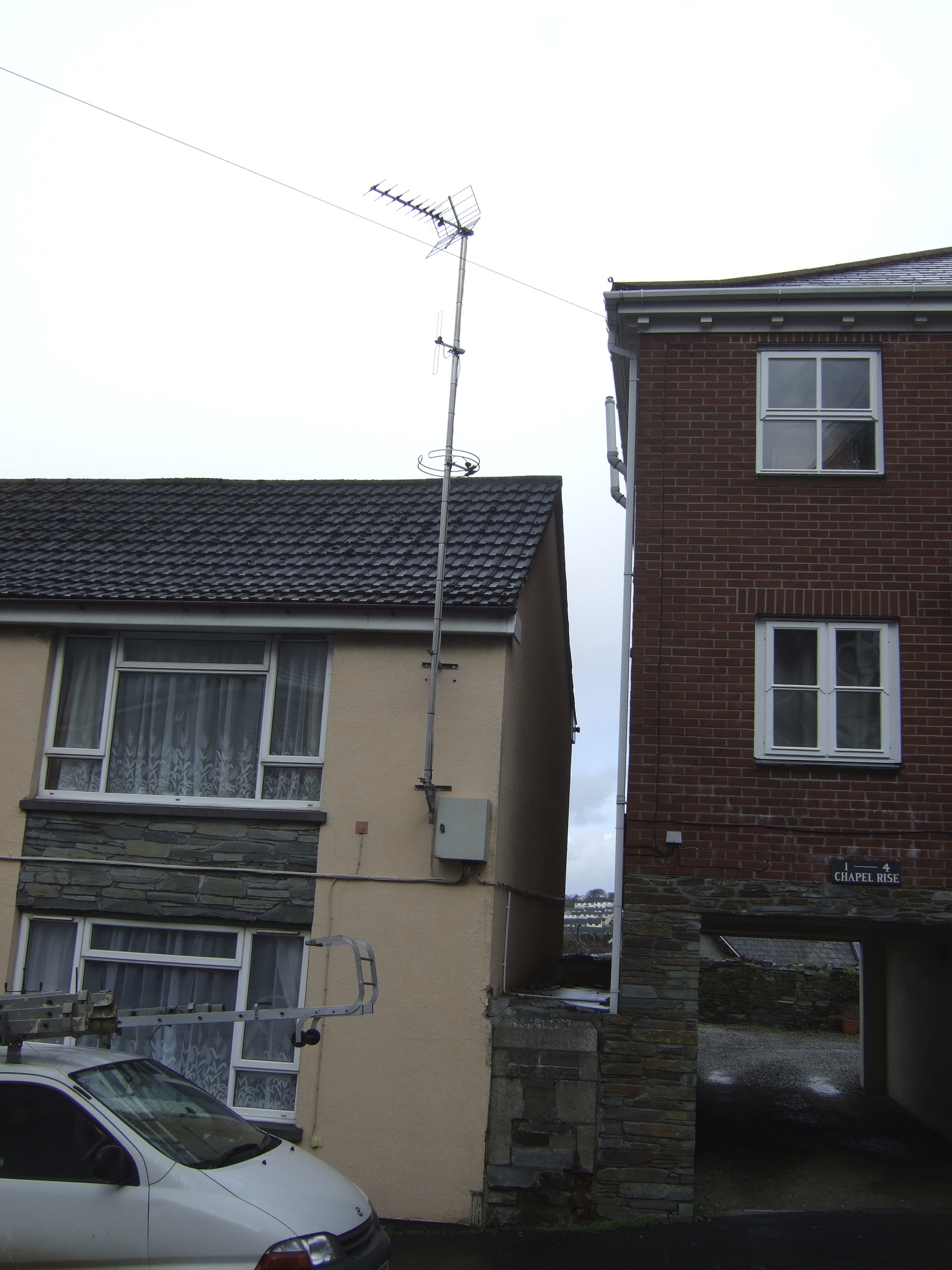 |
| A similar
problem in Tower Street Launceston, after a storm. The
telephone wires were the only reason that it did not all come crashing
down. |
A closeup of the problem. Once again
the bolts used
were too small. and the brackets too close together. |
All fixed. Larger bolts fitted, and
the top
bracket mounted higher. |
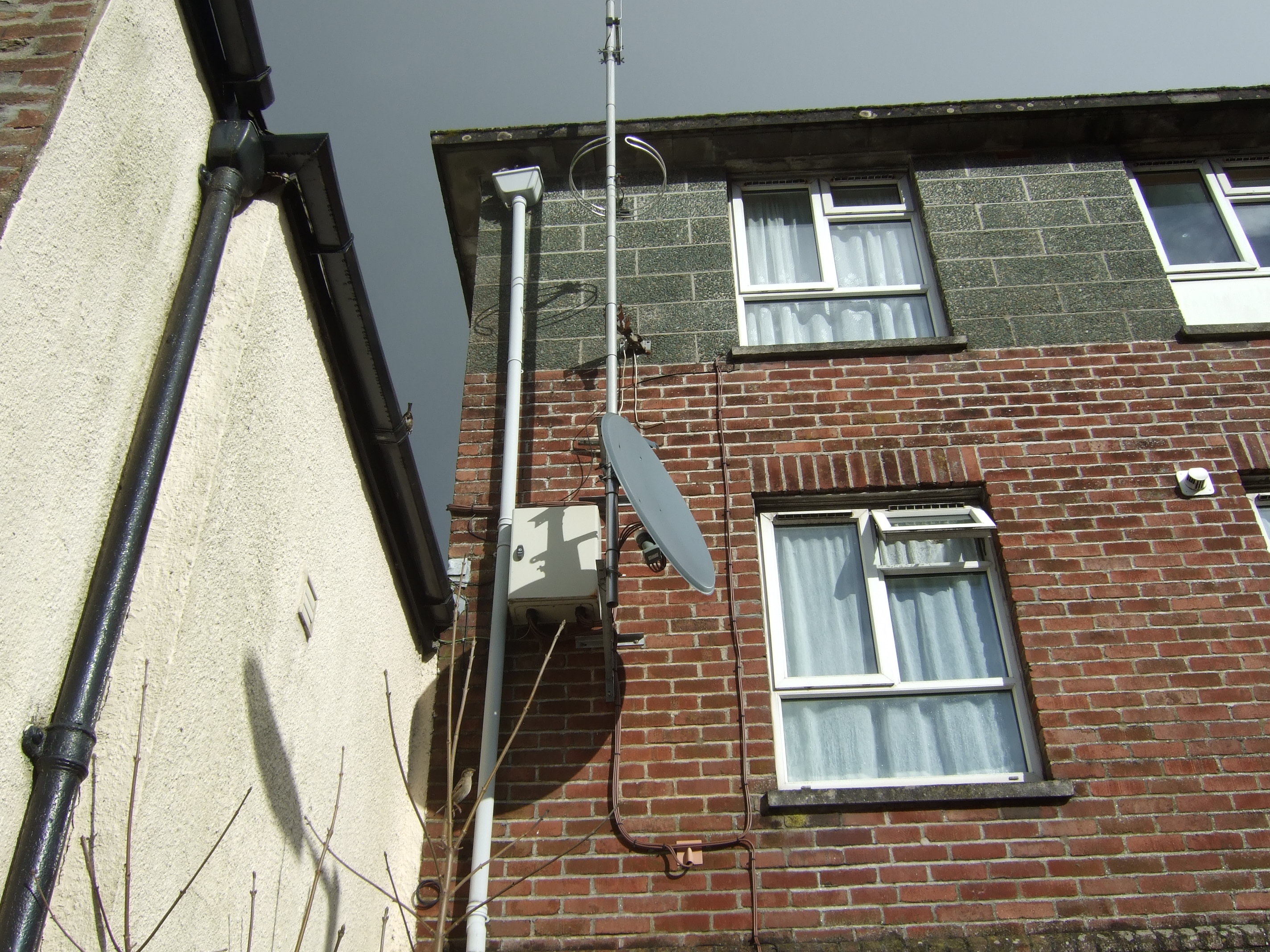 |
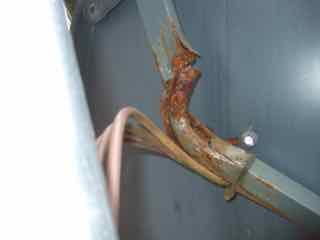 |
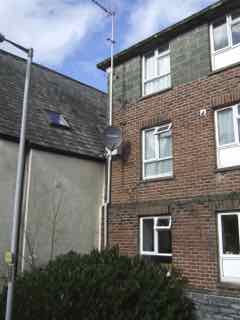 |
Hanging by a thread.
Also in Tower Street Launceston. |
Here's the thread.
A closeup of the back of the
steel dish.
Only five years old. |
All fixed again.
A new fibreglass dish has been fitted.
It will outlast any steel dish by a
number of years. |
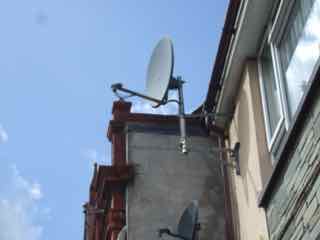 |
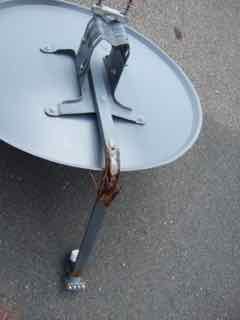 |
|
It looks OK from the ground.
Again in Tower Steet Launceston. |
But on closer inspection. The support arm has
rusted away after only five years. The LNB then dropped out of the prime
focus position under it's own weight, causing signal strength and
quality to deteriorate. |
|
| |
Return to homepage |
|











